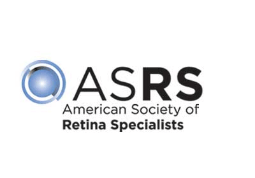What is Glaucoma?
Glaucoma is a group of eye conditions that damage the optic nerve (the cable that connects your eye to your brain), leading to progressive vision loss and, if left untreated, can eventually lead to blindness. This condition is typically associated with elevated intraocular pressure (IOP), which results from a build-up of aqueous humour, the clear fluid that circulates and provides nutrients to structures in the eye.

Causes & Symptoms
What Causes Glaucoma?
Although elevated intraocular pressure is the most common cause of glaucoma, other factors such as genetics, age, glasses script and ethnicity can also contribute to the development of the condition.
People over the age of 60, individuals with a family history of glaucoma, previous eye trauma, and those of African or Hispanic descent are at an increased risk of developing glaucoma. Additionally, certain medical conditions and medications may increase the risk of glaucoma.
Symptoms of Glaucoma
In the early stages of glaucoma, there may be no symptoms. As the condition progresses, the peripheral vision is usually affected first which may progress to tunnel vision.
In advanced cases, patients may experience total vision loss, which can lead to blindness if left untreated. Regular eye exams are crucial for the early detection and management of glaucoma.
Book a QERS Consultation
Treatment
Treatment Options for Glaucoma:
Treatment for glaucoma aims to lower the intraocular pressure and prevent further damage to the optic nerve. The primary treatment options include eye drops, laser surgery, and conventional surgery.
Eye drops: These are the most common form of treatment and work by reducing the production or improving the outflow of aqueous humour from the eye. Eye drops must be used as prescribed by the ophthalmologist and on a long-term basis to manage the condition.
Laser surgery: This procedure uses a focused beam of light to create small openings in the drainage system of the eye, allowing for improved fluid outflow and reducing intraocular pressure. The laser is also thought to remodel the outflow apparatus, increasing aqueous humour outflow.
Minimally Invasive Glaucoma Surgery (MIGS): This procedure is done through tiny incisions through the cornea (clear window in front of the coloured iris) where stents are used to increase drainage, aiming to reduce or eliminate the need for glaucoma eye drops or more involved invasive surgery.
Conventional surgery: In some cases, conventional surgery may be required to lower intraocular pressure to prevent further progression of field loss. During this procedure, the ophthalmologist creates a new drainage channel for the aqueous humour to flow out of the eye, through the sclera (white wall of the eye), usually under the upper eyelid. The aqueous humour is then absorbed by the surrounding tissues.
Your Journey
At Queensland Eye & Retina Specialists, our doctor will use the latest state-of-the-art precision equipment to help assess your glaucoma.
If you are suspected to have or have been diagnosed with glaucoma, your journey with the ophthalmologist will begin with a comprehensive eye exam that may include several tests to measure your eye pressure, examine your optic nerve, and assess your peripheral vision. Your ophthalmologist will then work with you to develop a personalised treatment plan that may involve eye drops, laser surgery, MIGS or conventional surgery.
Regular follow-up appointments will be scheduled to monitor your condition, adjust treatment as necessary, and assess the effectiveness of the treatment plan.
It is crucial to maintain regular eye exams with your ophthalmologist to monitor your condition and prevent further vision loss. If you experience any changes in your vision, contact Queensland Eye & Retina Specialists immediately.
More Information
For more information on glaucoma, head to one of the links below.

